

MiG-3
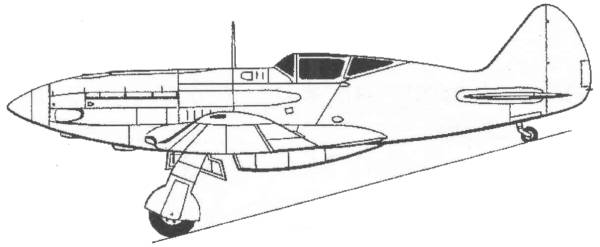
The MiG-3 was essentially an improved MiG-1, which was the first successful design carried out by former Polikarpov design team members Artem I. Mikoyan and Mikhail Y. Gurevich at the Experimental Design Bureau (OKB). MiG being the acronym assigned to their designs. The MiG-1 was known as the I-200 by the Soviet military and the first unarmed prototype reached a top speed of 403 mph in May of 1940 making it one of the fastest fighters in the world at that time.
Following a flight test program production was begun on a batch of 100 in September of 1940. The testing program had revealed a number of flaws including longitudinal instability, control response issues and handling problems. Redesign was started even as the first production MiG-1's were being built. The MiG-3 was the end result of the redesign work. The engine was moved forward by 4" to change the center of gravity, the dihedral of the outer wing was increased by 1 degree to improve stability, the air frame was strengthened, the height of the rear fuselage was reduced for better pilot visibility, the radiator fairing was moved forward and the supercharger intakes enlarged. To increase operational flexibility a 55 gallon fuselage fuel tank was added along with four wing hard points. These allowed the MiG-3 to carry 440 pounds of bombs or six 3.2" RS-82 rockets. Pilot survive ability was increased by the addition of 9mm seat armor and the fuel tanks were equipped with a system that used exhaust gases to purge the air from the fuel tanks to reduce the risk of fire or explosion from battle damage.
The MiG-3 was ordered into production in December of 1940. First deliveries to squadrons occurred in April of 1941 and it remained in production until the last week in December of 1941. It was discontinued due to the unavailability of the AM-35A engine. This was a result of Stalin's order to shift production to the low altitude engine (AM-38) for the Il-2. Total MiG-3 production amounted to some 3120 aircraft with 50 more being produced from available parts during the first half of 1942. The MiG-3 remained in service almost to the end of the war with wrecked aircraft being cannibalized to keep others flying.
The firepower of many MiG-3's was increased by the
addition of two 12,7 mm machine guns mounted below the wings. With this
upgrade it gave the MiG-3 approximate parity with the Bf 109F which was
a contemporary. The Luftwaffe was much surprised when they first
encountered the MiG-3 especially given the fact that it was not only
faster than the Bf 109F but could out maneuver them as well. Even
though it was an improvement over the MiG-1 it was still a demanding
aircraft to fly but in the hands of a competent pilot it was certainly
up to the task. By the time of the German invasion 1289 aircraft had
been delivered to th VVS and it was the most prolific of the three new
generation fighters at the outbreak of the hostilities, going from 10%
of the front line force in mid 1941 to 41.2% by year end. The first
MiG-3 victory of the war was a Do 215 claimed on the opening morning of
operation Barbarossa. A number
of Soviet aces got their first kills in the MiG-3.
The Kit
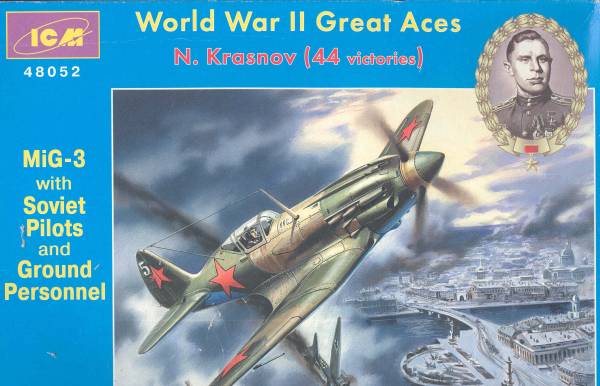
The ICM MiG-3 kit comes in one of the dreaded end flap boxes, which are so unhandy, with moderately nice artwork on the front of the box and color profiles on the back. The kit represents a late version of the aircraft, which was slightly longer than early versions. All of the aircraft parts including the clear parts are contained in one bag. Not always the best for keeping the clear parts in good condition. A second bag includes six figures, one fully assembled and five that can be assembled in a variety of poses along with some oil drums, a work bench with a vice, a ladder, three jerry cans and a couple buckets, the makings for a nice diorama.
The aircraft parts are contained on four sprues of off white colored plastic. The surface detail is both raised and recessed where applicable and are almost flash free. The small parts will require some parting line clean up but this too is light. The sprue gates, while not as small as state of the art high end kits, are not bad for a limited run kit and most of the care will need to be exercised removing the smaller parts. The surface finish has a very fine texture to it but not like the orange peel seen on some kits. I think it will look OK once primed and painted. The kit comes with a nicely detailed engine but don't bother building it unless you want to leave the cowlings off or display it separately as the cowlings won't fit with the engine installed.
The wing assembly is a bit complex, made up of thirteen parts but with careful dry fitting as you go it shouldn't present and major problems. I found no sink marks or other surface irregularities and no ejector pin marks that would be seen on the completed model. The fabric detail is a bit overdone and depending on your point of view you may want to sand it down a bit. The cockpit is well appointed and only those with AMS will need to add to it. For those wishing to enhance the cockpit, Eduard makes a photoetch kit for it, 48332, or if you want to go all the way Cutting Edge makes a complete replacement cockpit, CEC48169, which is quite nice but it cost almost double what the kit does. Also included are six under wing rockets and launching rails. By my count there are 116 parts for the aircraft, 48 for the added details and 5 clear parts for a total of 169, not bad for a rather smallish 1/48 scale fighter. Shown below are the sprues for the aircraft and accessories.
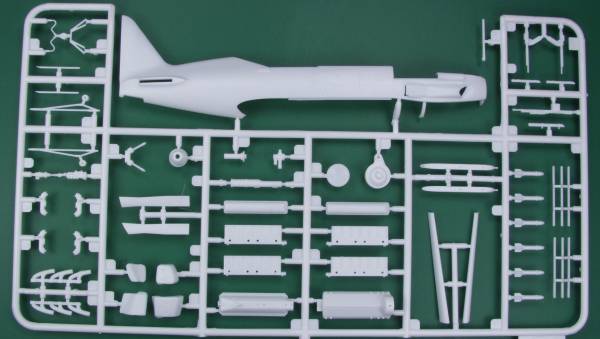
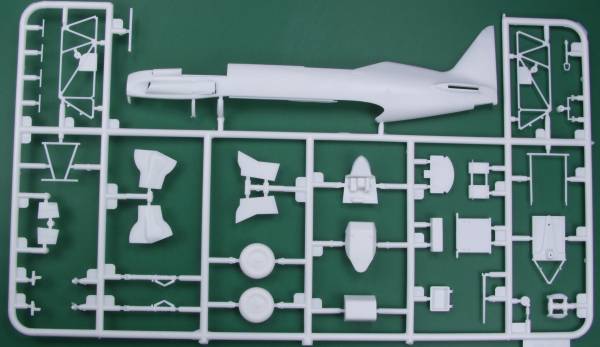
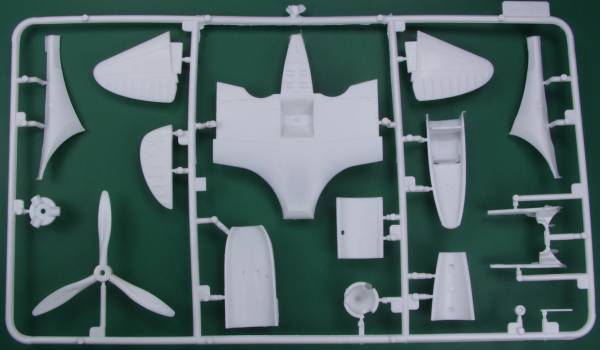
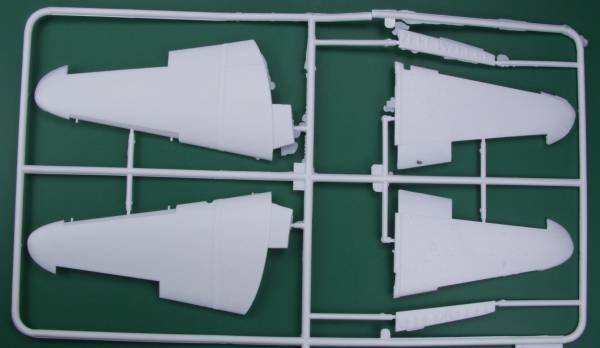
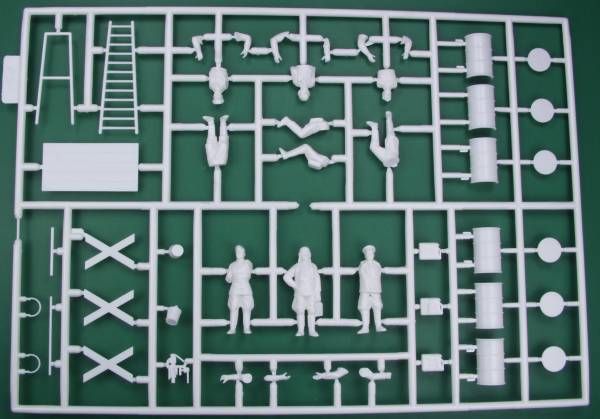
The clear parts are not the best I've seen clarity wise and having been shipped in with the rest of the parts didn't help any but they should be acceptable with a coat of Future. The frame work is clearly registered for ease in masking and painting. A replacement set is available from Squadron, SQ9618. The kit parts are shown below.
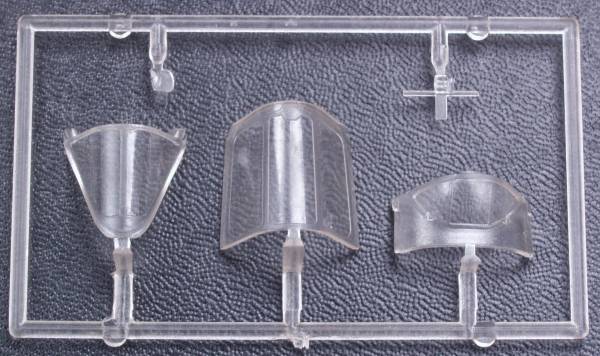
The decals appear thin and well registered and include markings for two different planes flown by forty-four victory ace N. Krasnov. There are reports that the decal are a bit too thin to the point of being opaque. The sheet also includes the main instrument panel and a subpanel for the cockpit.
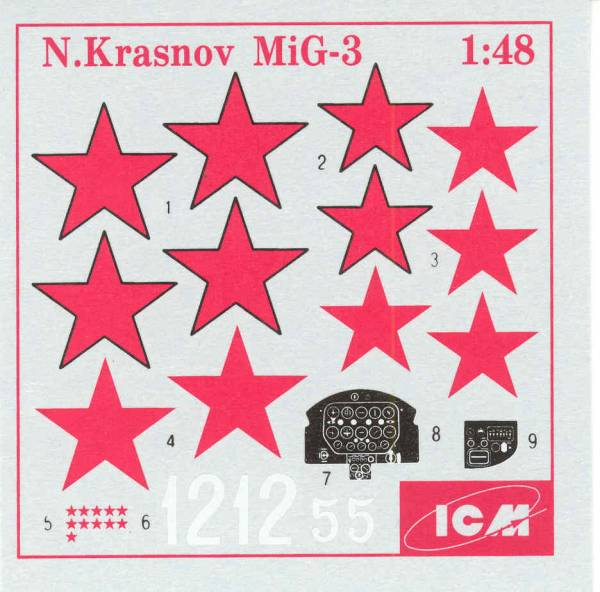
The instructions are printed on an 11" x 22" page that is trifolded to provide 6 pages, the first page has history in four languages, one half page has a sprue parts map, two and a half pages cover the aircraft assembly, one page covers assembly and painting of the accessories and figures including medals and rank markings and the last page lists paints used by name in four languages and Humbrol numbers and decal application instructions in four languages.
Over all this seems to be quite a nice kit and builds up into an accurate model of the MiG-3
Links to kit build or reviews
Build / reviews can be found here and here
References
Soviet Aces of World War 2 by Hugh Morgan
A good online source of information on Soviet aircraft and markings can be found here.
Back to the Russians are Coming
Updated 5/11/08